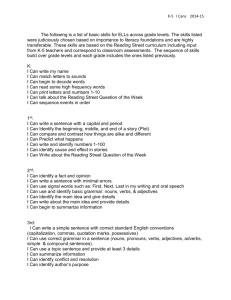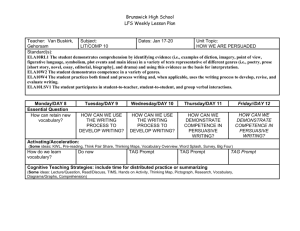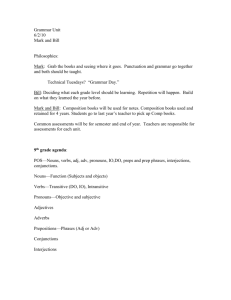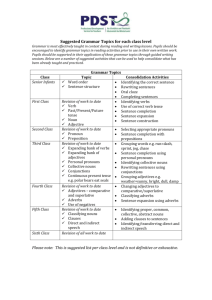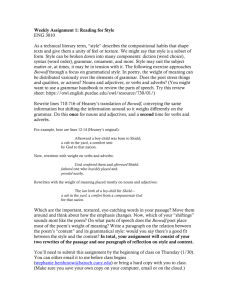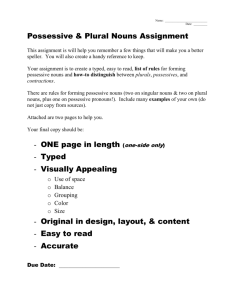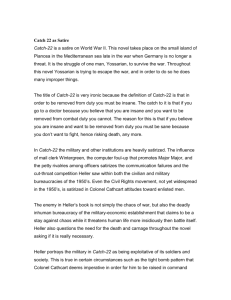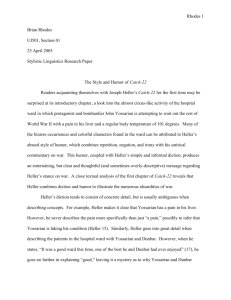Using Picture Books to Help Teach Grammar
advertisement
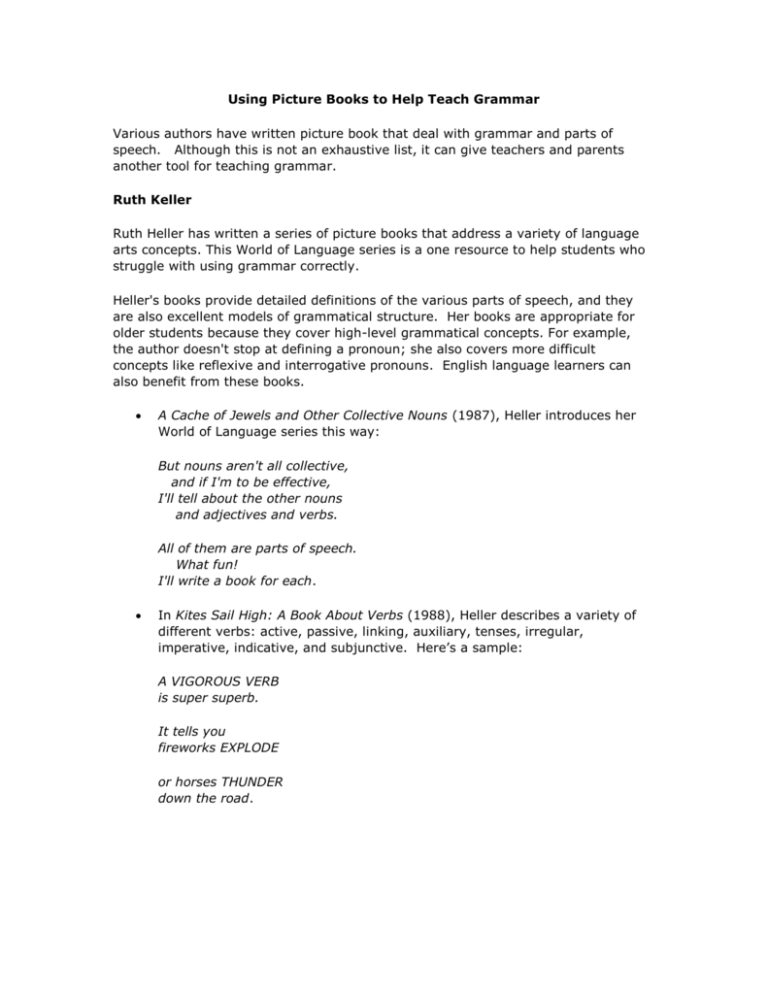
Using Picture Books to Help Teach Grammar Various authors have written picture book that deal with grammar and parts of speech. Although this is not an exhaustive list, it can give teachers and parents another tool for teaching grammar. Ruth Keller Ruth Heller has written a series of picture books that address a variety of language arts concepts. This World of Language series is a one resource to help students who struggle with using grammar correctly. Heller's books provide detailed definitions of the various parts of speech, and they are also excellent models of grammatical structure. Her books are appropriate for older students because they cover high-level grammatical concepts. For example, the author doesn't stop at defining a pronoun; she also covers more difficult concepts like reflexive and interrogative pronouns. English language learners can also benefit from these books. A Cache of Jewels and Other Collective Nouns (1987), Heller introduces her World of Language series this way: But nouns aren't all collective, and if I'm to be effective, I'll tell about the other nouns and adjectives and verbs. All of them are parts of speech. What fun! I'll write a book for each. In Kites Sail High: A Book About Verbs (1988), Heller describes a variety of different verbs: active, passive, linking, auxiliary, tenses, irregular, imperative, indicative, and subjunctive. Here’s a sample: A VIGOROUS VERB is super superb. It tells you fireworks EXPLODE or horses THUNDER down the road. In Many Luscious Lollipops: A Book About Adjectives (1989) predicate, demonstrative, possessive, proper, comparative, superlative, and irregular adjectives are covered in depth. An ADJECTIVE's terrific when you want to be specific. In Merry-Go-Round: A Book About Nouns (1990) Heller defines a variety of noun categories: proper, common, abstract, concrete, compound, collective, singular, plural, and possessive. Nouns name a person, place or thing... a damsel, a forest, a dragon, a king. These NOUNS are all COMMON, and they're very nice, but PROPER NOUNS are more precise. In Up, Up and Away: A Book About Adverbs (1991), Heller clarifies positive, negative, irregular, comparative, and superlative adverbs. ADVERBS work terrifically when asking most specifically, "When?" and "How?" and "Where?" and "Why?" WHEN do owls hoot? HOW do you do? WHERE in the world is Timbuktu? In Behind the Mask: A Book About Prepositions (1995), Heller to describes prepositions, phrasal prepositions and distinguishes between prepositions and adverbs. She explains: Of PREPOSITIONS have no fear. They help to make directions clear. Mine, All Mine: A Book About Pronouns (1997) Heller writes about a variety of pronouns: possessive, demonstrative, indefinite, reflexive, interrogative, and relative. PRONOUNS take the place of nouns... so we don't have to say... "Mike said Mike walked Mike's dogs today. Mike walked Mike's dogs a long, long way." How boring... Finally, in Fantastic! Wow! And Unreal! A Book About Interjections and Conjunctions (1998), many forms of interjections are covered, as are conjunctions, including coordinating, subordinating, correlative, and compound. INTERJECTIONS are words we use to declare ... Good grief! Out of sight! Holy cow! That's her hair. They're capitalized and punctuated, and stand alone when emphatically stated.
